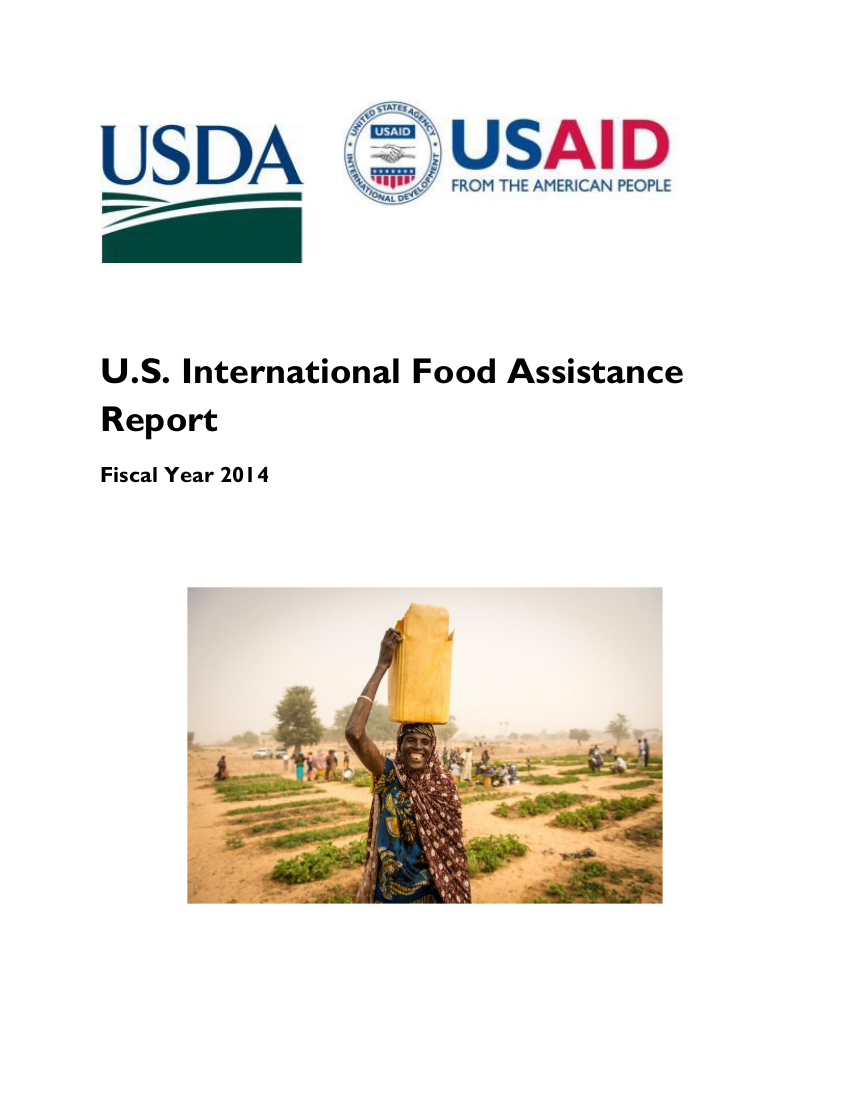As in years past, U.S. food assistance programming in 2014 played out against dramatic and tragic backdrops of war, drought, typhoons and other natural disasters. It also appeared in less visible crises by helping women and children facing chronic hunger and poverty realize their potential and enhancing poor communities’ ability to feed themselves. It saved lives, rebuilt livelihoods, and mitigated the impacts of future crises by facilitating disaster preparedness. It kept girls in school, improved the nutrition of millions of children, and addressed the root causes of food insecurity in some of the poorest corners of the world. It continued to make important contributions to the U.S. Government’s global hunger and food security initiative, Feed the Future. The compassion and generosity of the American people were visible in every region of the world through the more than $1.8 billion of food assistance shown in Table 1 the United States provided.
World crises stretched the capacities and resources of the global humanitarian community. The United Nations (UN) declared five Level 3 – the UN’s highest designation – emergencies in fiscal year (FY) 2014, signaling exceptional measures were required to address them. These included Typhoon Haiyan in the Philippines and conflicts in the Central African Republic, South Sudan, and Syria. In West Africa, the Ebola outbreak created an extraordinary health emergency that not only killed thousands but seriously impacted food security for millions. Conflict in Iraq increased to such an extent that it replaced the Philippines as the fifth Level 3 emergency by the end of FY 2014. The scale and scope of displacement in 2014 was so dramatic that the United Nations declared more people were displaced in 2014 – over 50 million – than at any other time since World War II. In this time of rising global need the United States continued to seek ways to deliver aid as efficiently and effectively as possible, address nutritional needs of women and children, enhance the overall sustainability of food assistance results, and improve monitoring of precious resources.
USDA and USAID implemented their programs this year under the newly authorized Agricultural Act of 2014 (commonly referred to as the 2014 Farm Bill). This Farm Bill reaffirmed America’s resolve to be a leader in combating global hunger and malnutrition. It recognizes the important role of food assistance to build resilience of communities, mitigate and prevent food crises, and reduce the future need for emergency aid. It supports continued investments to improve the quality of food aid products to meet the nutritional needs of vulnerable populations. It offers increased flexibilities that allowed USAID to scale back its monetization practices, meeting the mandated 15-percent minimum in the Farm Bill, a change which contributed to $21 million in savings that were reinvested into food programs.
The Farm Bill also authorizes USDA to administer a Local and Regional Food Aid Procurement (LRP) program. LRP food assistance programming may include the use of food commodities and products from producers in local or regional proximity to food assistance recipients. The LRP program will be used to complement the McGovern-Dole International Food for Education and Child Nutrition Program (McGovern-Dole) through the use of products grown in recipient or nearby countries. Currently, USDA is developing policies and procedures for implementation of the LRP, which will be in place for projects in FY 2016.
These changes were celebrated as milestones that improved the overall efficiency and effectiveness of the U.S. global food assistance programs. The Administration will continue to work with Congress to discuss the best ways to leverage flexibility and to ensure that the United States sustains its global leadership role in food assistance. This report provides highlights of trends and activities for the year.








Comment
Make a general inquiry or suggest an improvement.